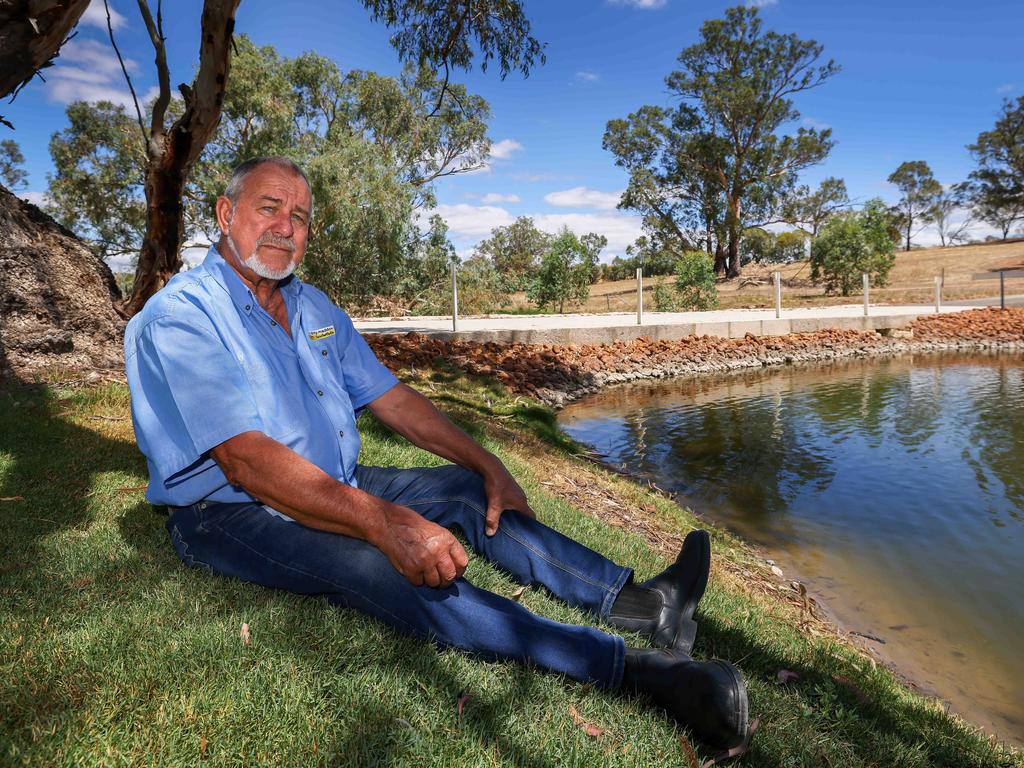Blue-banded bee appears in pages of frontier memoir ‘plagued by unacknowledged borrowing’
The pages of an obscure frontier memoir provide rare insight into the potential groundwork for evidence critical to the closure of the Blayney gold mine.

A mid-century autobiography seemingly contains the first known reference to the blue-banded bee dreaming upon which Tanya Plibersek justified her effective shutdown of the Blayney gold mine, but ties it to a separate Indigenous group.
Our Channel Country by Alice Monkton Duncan-Kemp is an account of the author’s connection to the Mithaka people in southwest Queensland upon whose country her family homestead was based. It was published in 1961.
The Australian has found it contains a passage bearing uncanny resemblance to the account of the blue-banded bee dreaming provided by the Wiradyuri Traditional Owners Central West Aboriginal corporation to the Environment Minister in its effort to secure heritage protection for the site of the McPhillamy’s gold mine.
The dreaming has been heavily disputed since it was brought to light, with several Wiradjuri elders disputing its existence, and the family of the elder who supposedly handed it down saying they had never heard of it either.
While Our Channel Country could provide it with historical grounding, experts party to and independent of the investigative process for the McPhillamy’s gold mine have questioned the potential for cultural crossover between the Mithaka and Wiradyuri and historicity of Duncan-Kemp’s work. “When Koora-koo-inyah (a dreamtime clay sculptor cited in Duncan-Kemp’s work) died after years of useful and devoted service, she became the small peacock-blue “opal” bee, which builds its cells of clays, true to the memory of the ancient sculptor,” the passage reads.
“The bees, sacred even to the detribalised aborigines (sic), gather not honey but pollen, and are true maisons (sic), mining the soil by means of the long sharp picks on their hind legs.”

The original submission of the blue-banded bee dreaming by the Wiradyuri corporation – and described to The Australian – matches Duncan-Kemp’s account of the bees descending from the sky and having a connection to riverbanks.
Duncan-Kemp was born in Charleville in 1901 and lived around Toowoomba until her death in 1988. While she was not Indigenous, her work provided an invaluable portrait of native wildlife, landmarks and customs for the Mithaka. However, the historicity of her work has been questioned by some scholars, with accusations of plagiarism hanging over it. Her work has returned to vogue in recent years, despite being out of print for decades.
It was critical to a successful Native Title claim in 2015 and was quoted by Bruce Pascoe in his book Dark Emu.
Conservationist Jennifer Silcock has helped lead the research of Duncan-Kemp’s bibliography and its scientific applications, primarily through her 2024 research paper “The Curious Ethnobotany of Alice Duncan-Kemp”, published in Economic Botany.
“Alice Duncan-Kemp sits within a small canon of white women writers who lived among Aboriginal people on the Australian pastoral frontier. Young Alice was cared for and taught by Mithaka and Karuwali people and recorded detailed ethnographic information,” the paper opens.
“Her record is singular and intriguing but unscientific, difficult to verify and in some parts plagued by unacknowledged borrowing from other sources.”
Dr Silcock said there was still the potential for similar Dreaming stories to have evolved independently yet comparably.
“I work a lot on groundwater springs in Queensland, around the world they’re always sacred sites where you’ve got water coming up out of the ground.
“The mythologies around groundwater and springs and oases around the world, there’s this startling congruence around how people mythologise and associate with them. But certainly in Aboriginal Australia, you see the same motifs recurring across Australia.
“It’s funny how Alice keeps recurring in strange ways and sometimes many miles distant.”

Ethnographer Philip Clarke was one of the many independent experts enlisted to test the intangible cultural significance of the Blayney-Kings Plains region during the heritage debate over the McPhillamy’s gold mine. He said it was highly unlikely a cultural custom could have made its way 850km down to the Belubula River headwaters and remained a part of oral traditions to this day.
“There are post-European ceremonies and things that travelled around … but there’s no suggestion that anything’s come from the Diamantina-Cooper Creek area of southwest Queensland all the way into central NSW,” he said. “It’s also a different landscape, and has different totemic systems (and) different languages. All the differences are stacking up.
“While being a problematic source of information on Aboriginal culture, Duncan-Kemp’s various publications and later radio interviews had vast popular appeal, and as such have relevance to some contemporary writers.
“If (Duncan-Kemp’s) record was regarded as genuine and accurate, it would at least place the story somewhere. As it is, it’s got every chance of being possibly made up, either in part or in full.”
The Wiradyuri corporation was contacted for comment. A spokesperson for Ms Plibersek said it would be “inappropriate for the minister to comment” given ongoing legal proceedings over her decision.








To join the conversation, please log in. Don't have an account? Register
Join the conversation, you are commenting as Logout